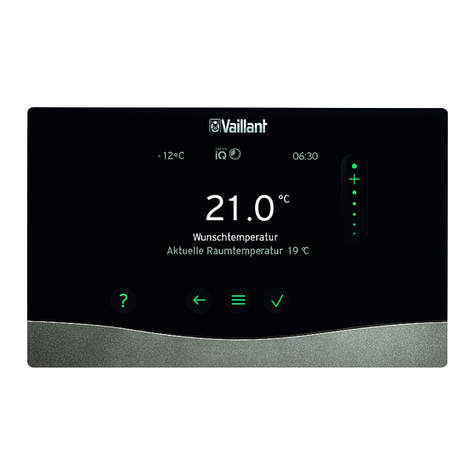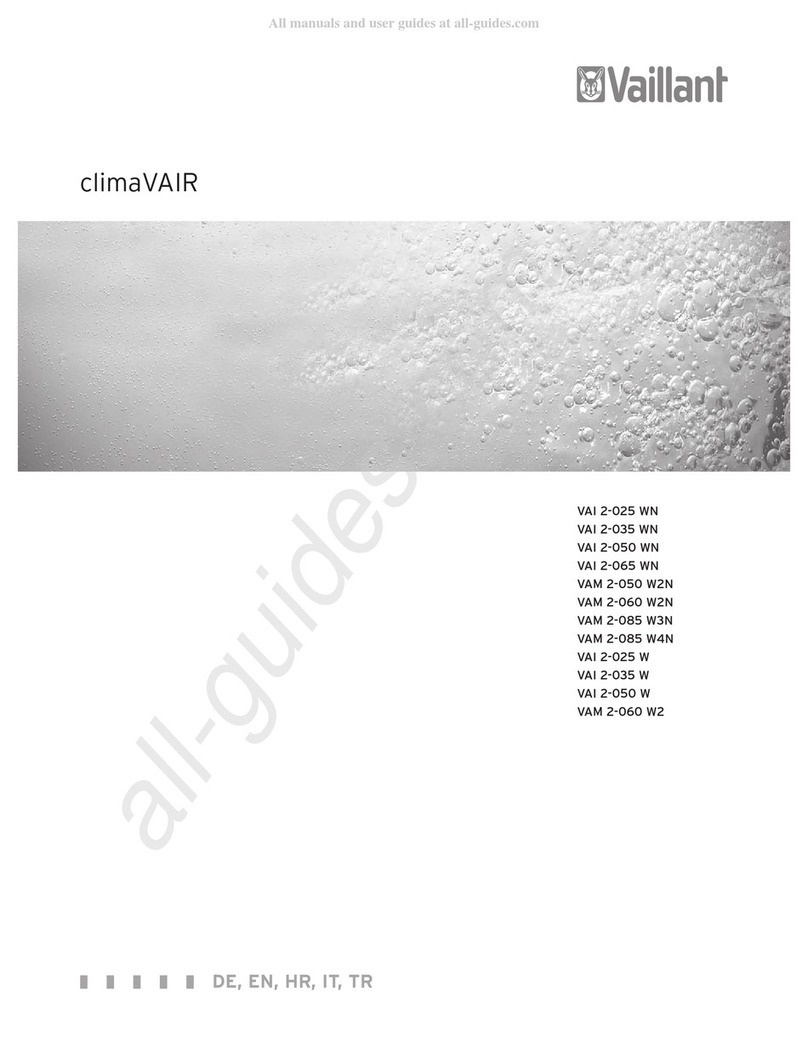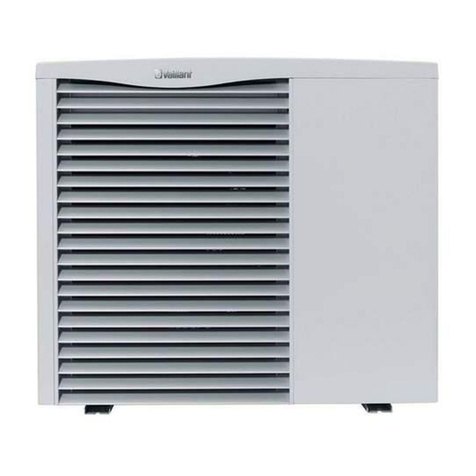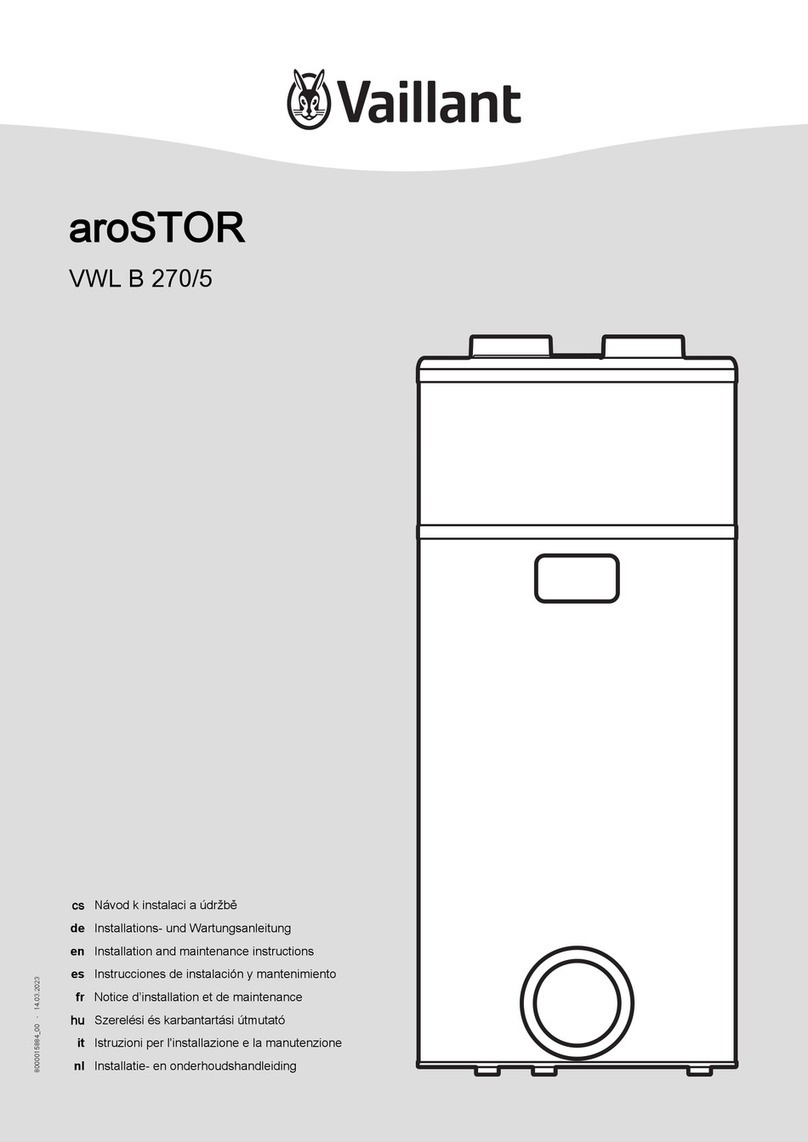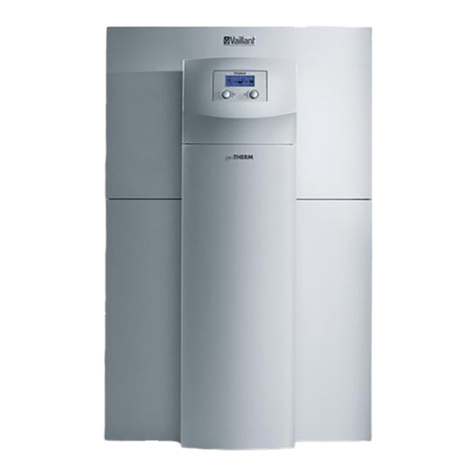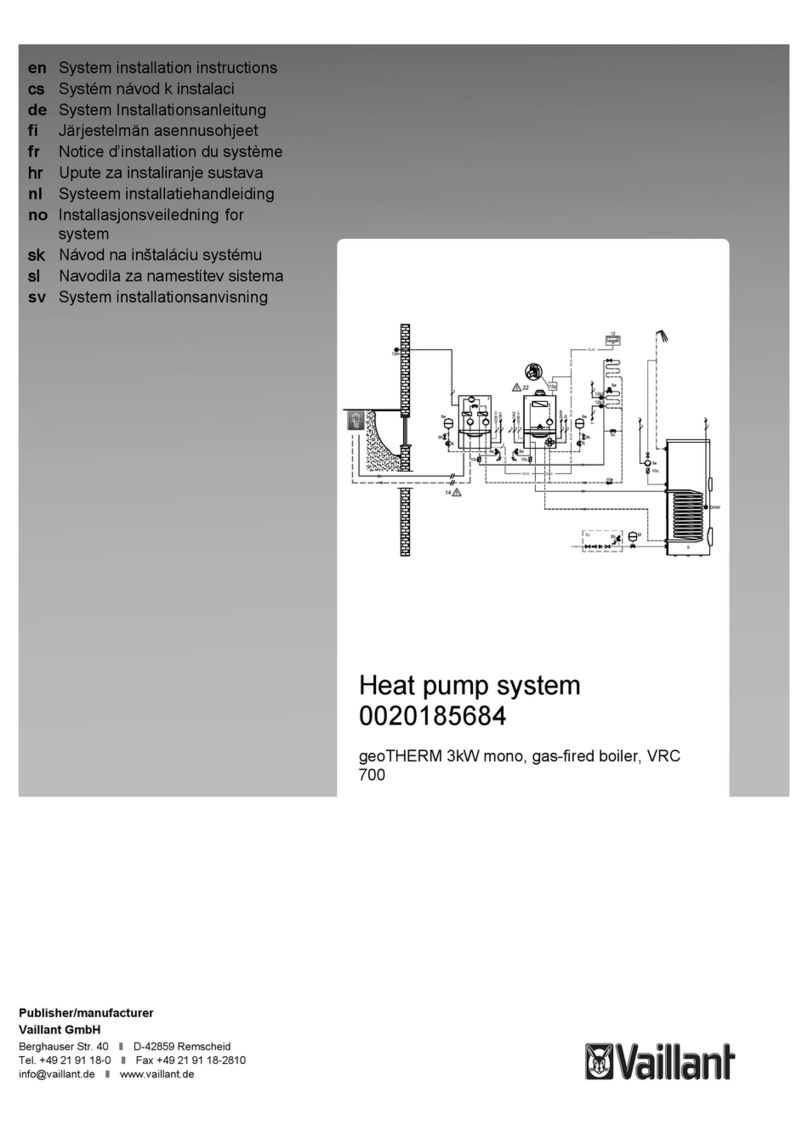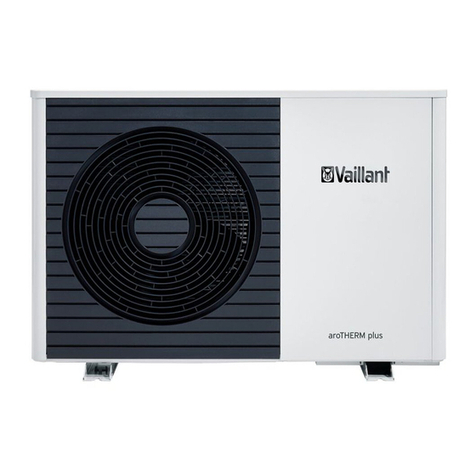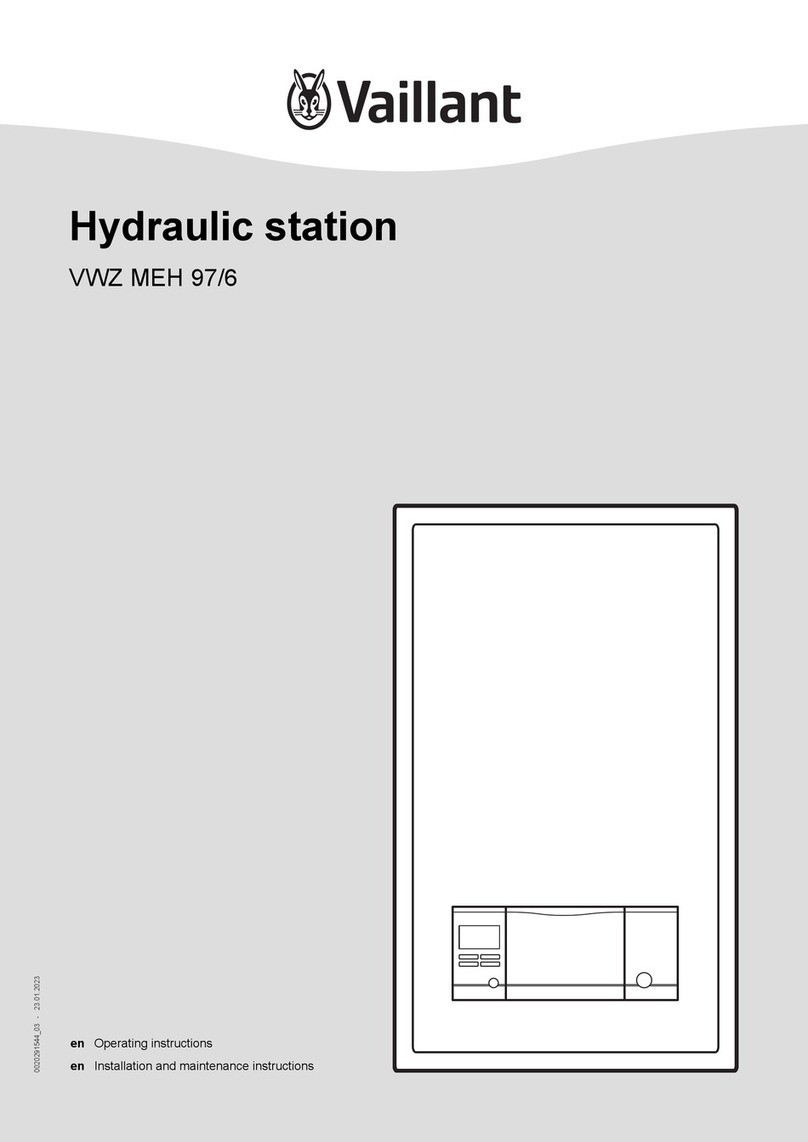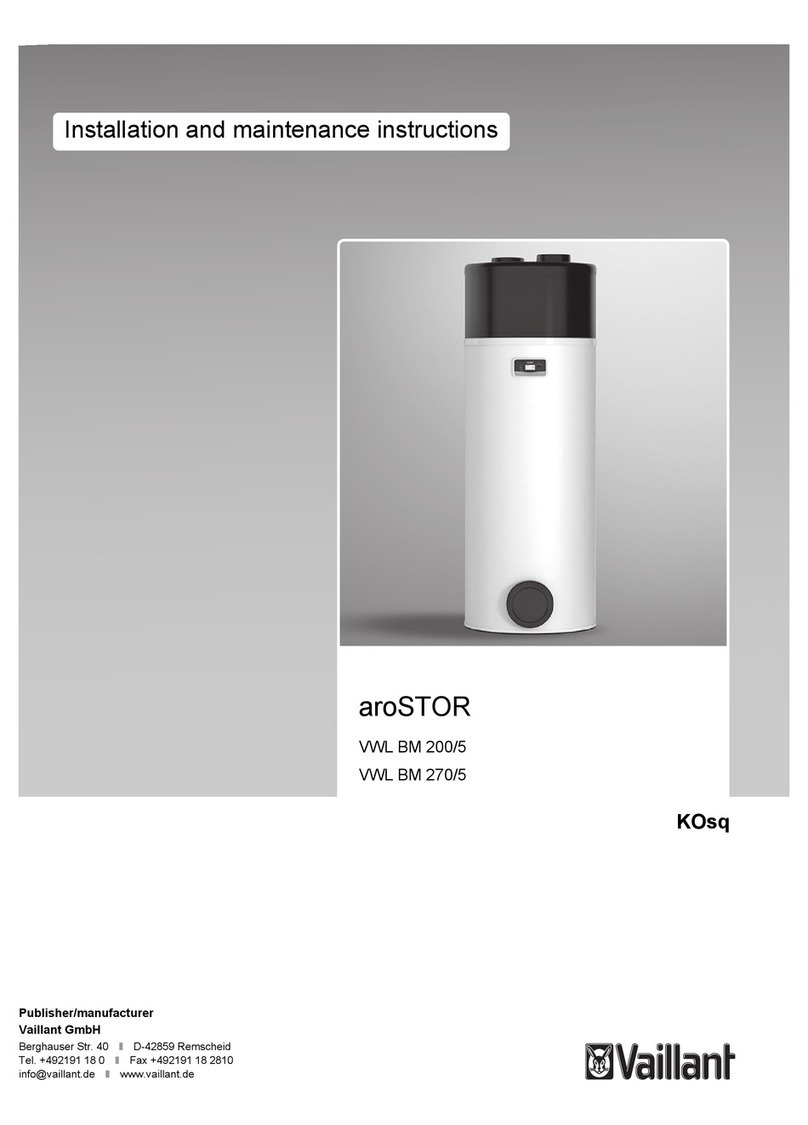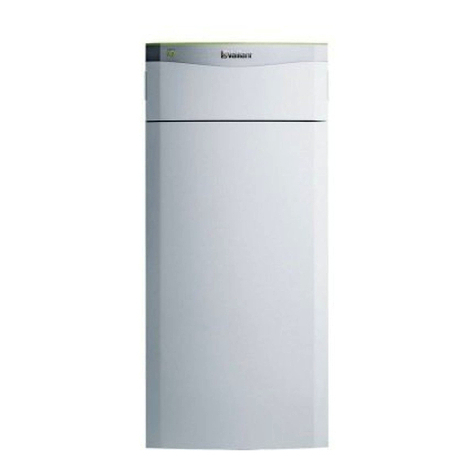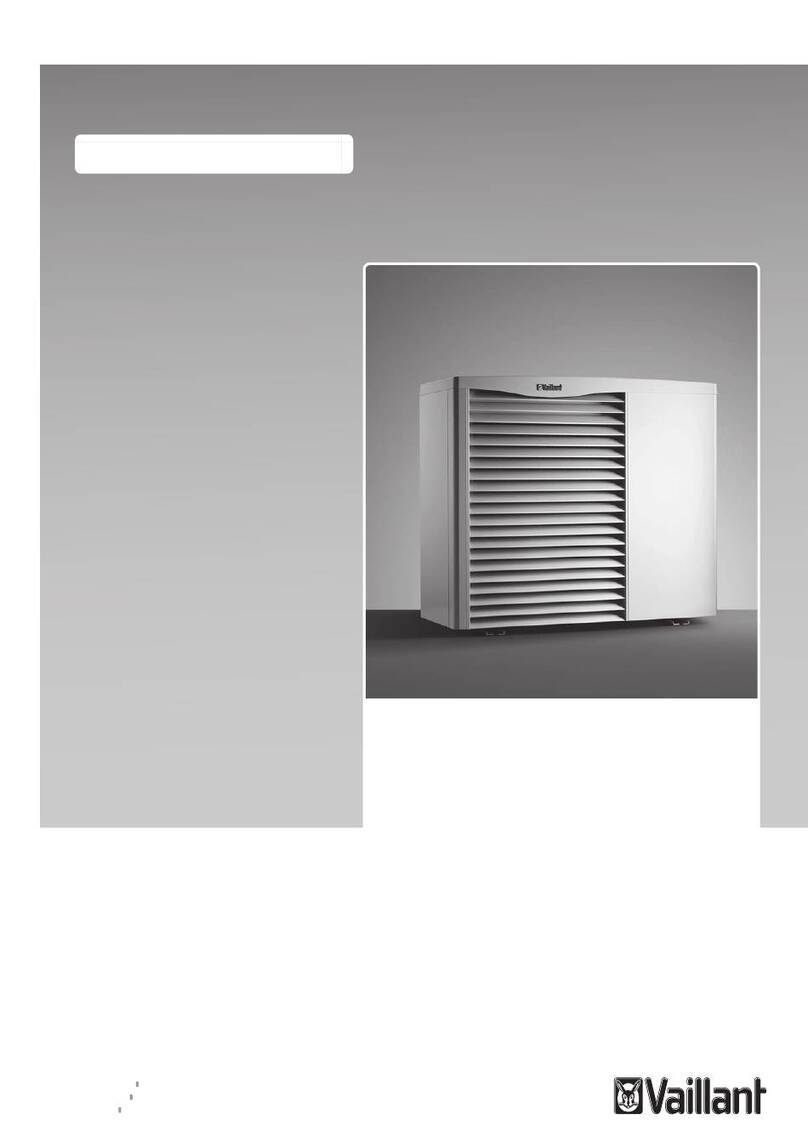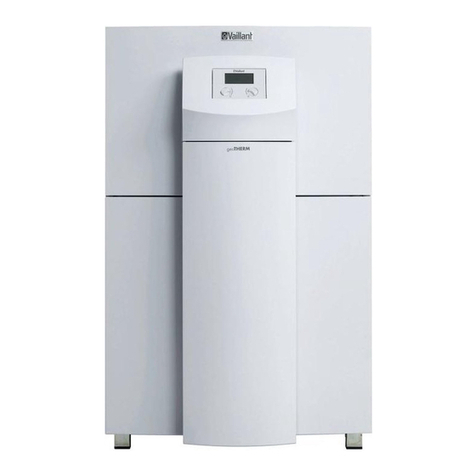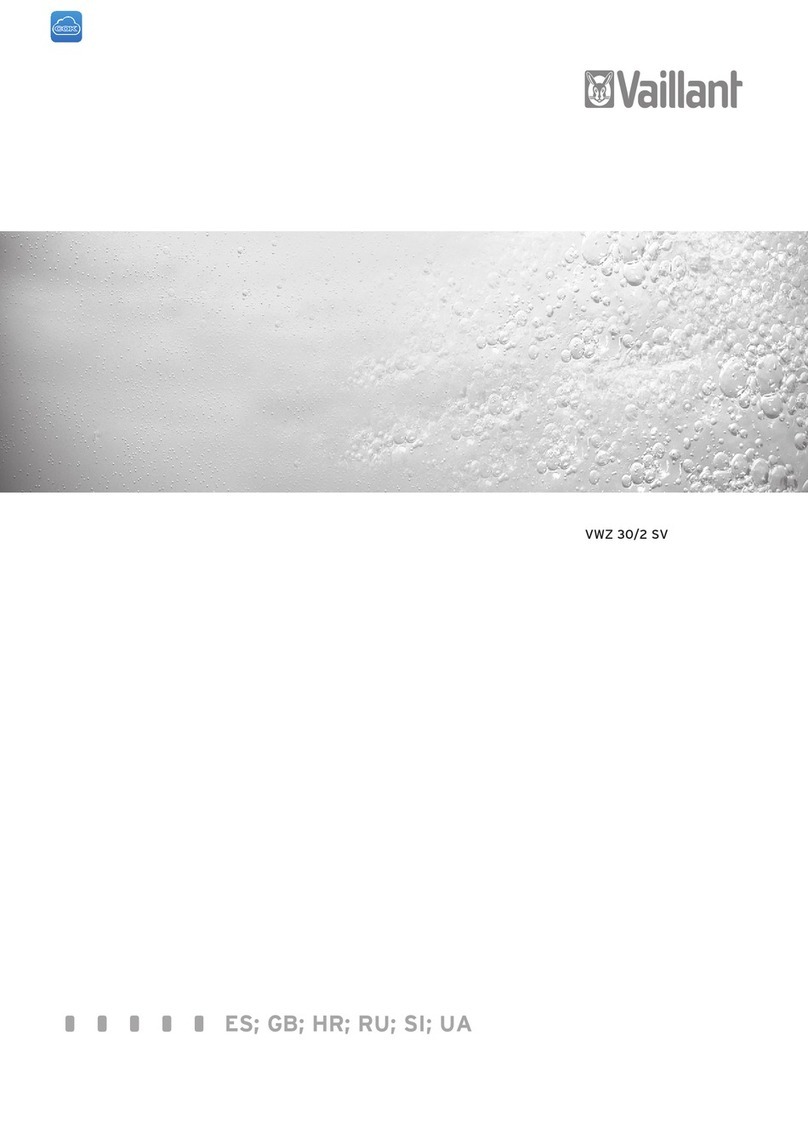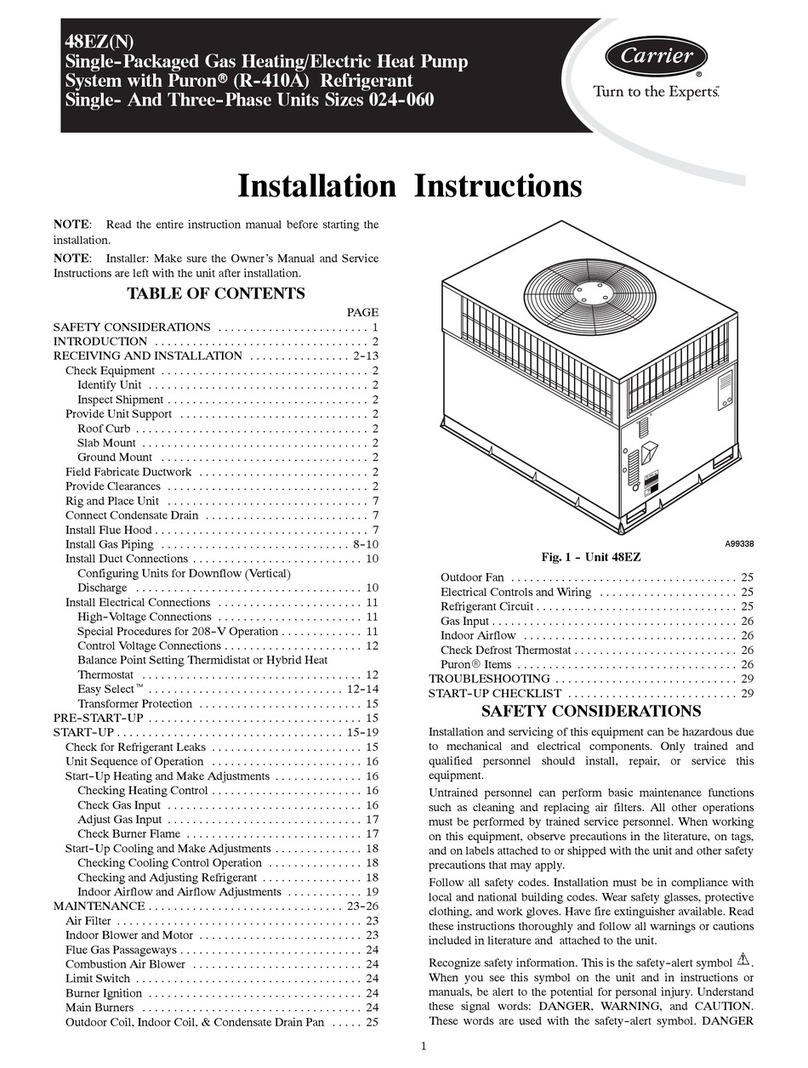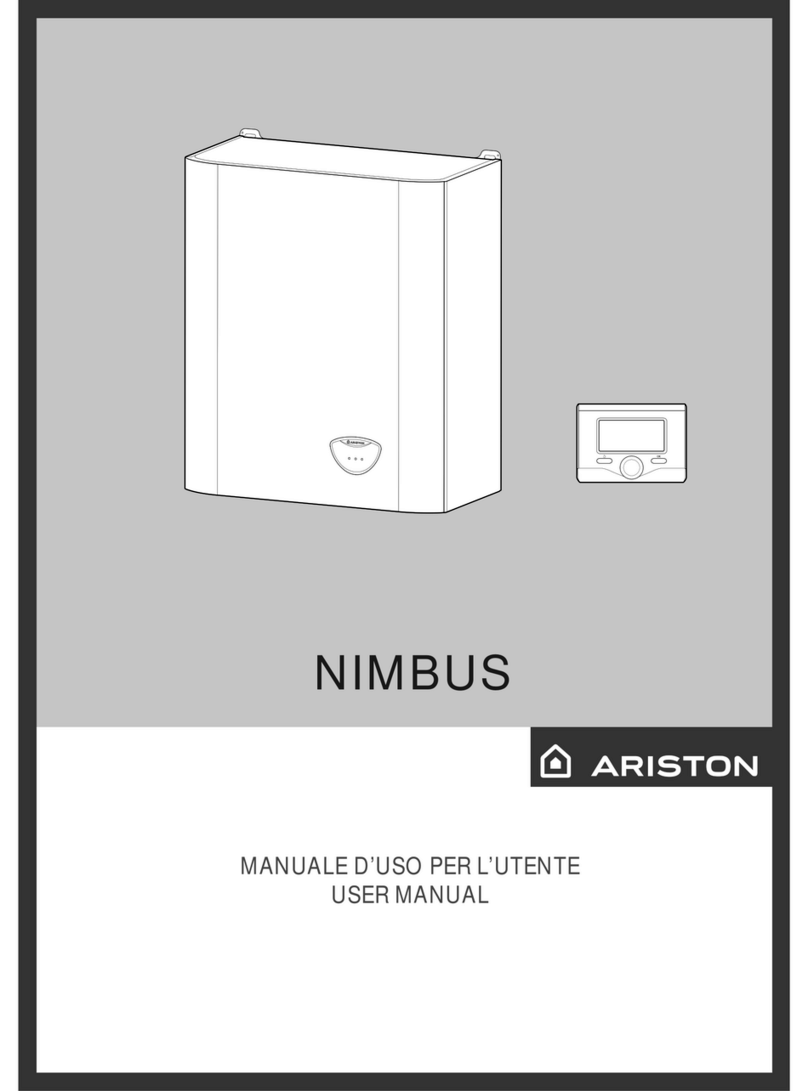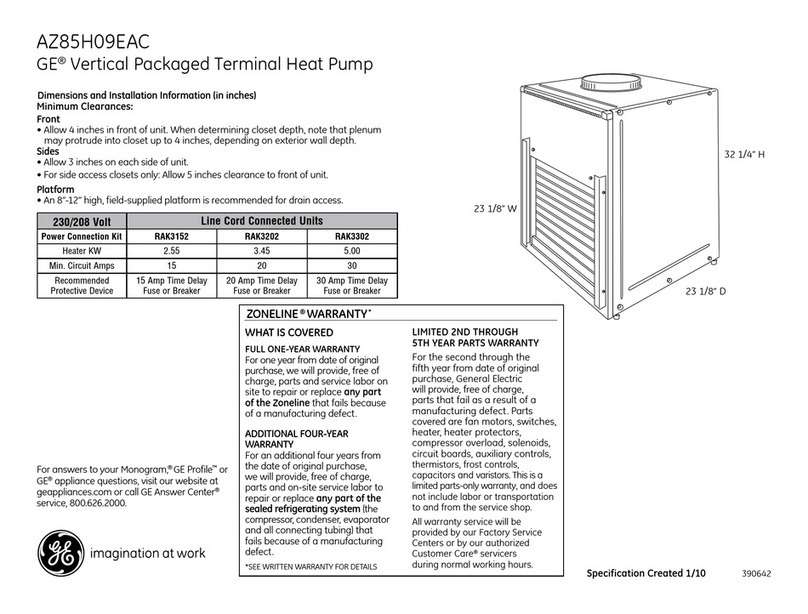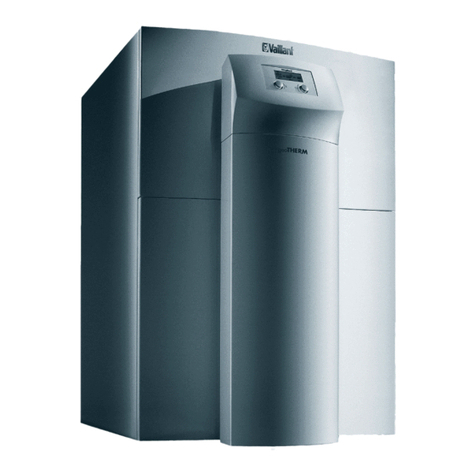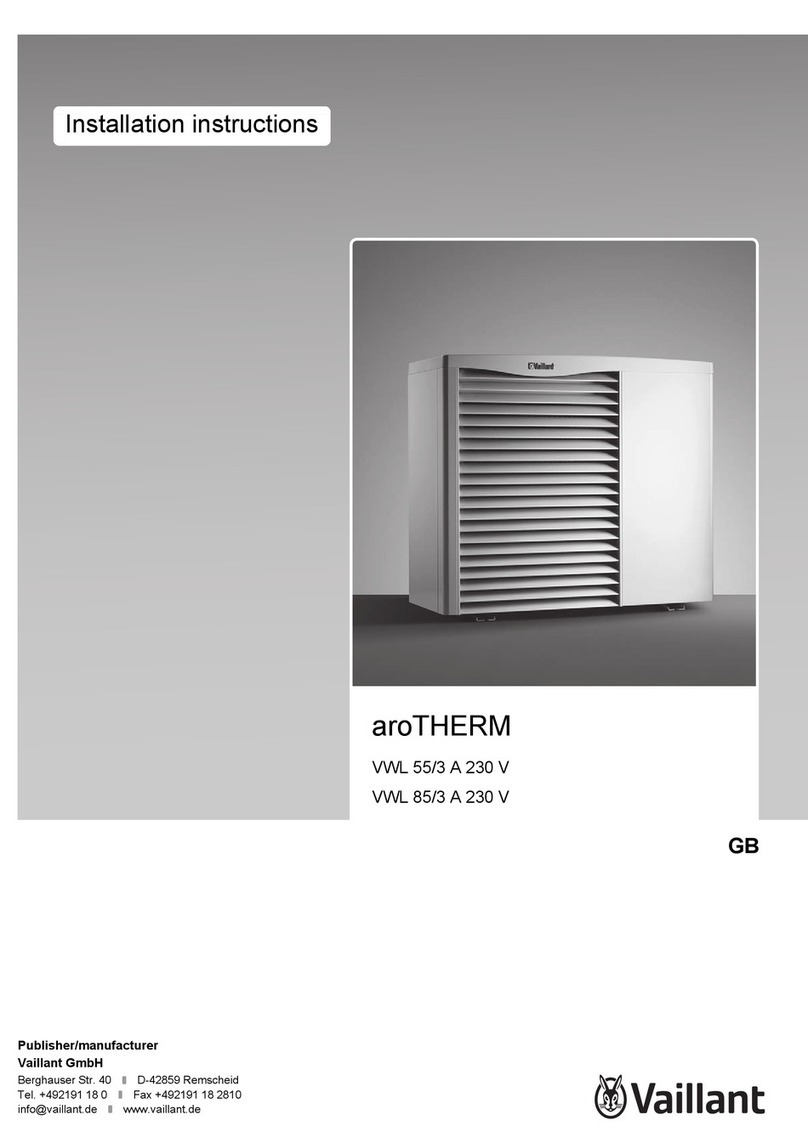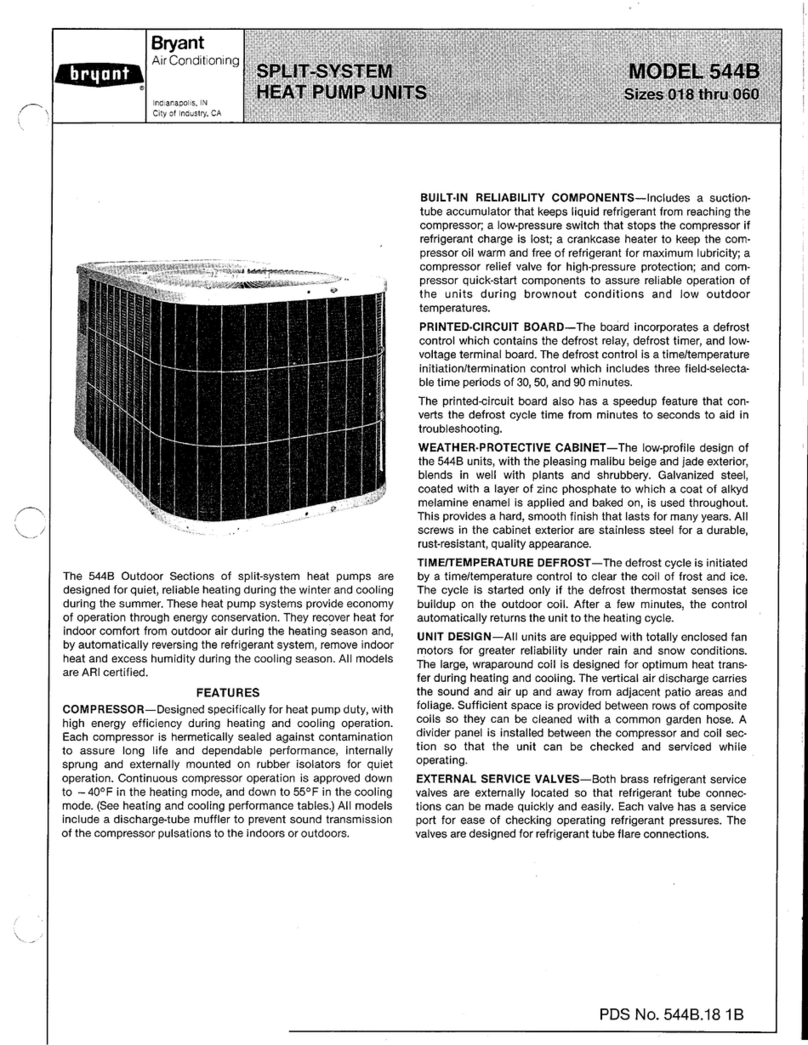
8Installation and maintenance instructions 0020213395_04
3 Heating circuit
4 Compressor
5 Refrigerant circuit
6 Brine circuit
7 Heat source
8 Brine pump
9 Evaporator
10 Electronic expansion
valve
11 Condenser
12 Heating/cylinder char-
ging diverter valve
13 Electric back-up heater
The heat pump system uses geothermal energy or ground
water as the heat source.
The heat pump consists of the following separate circuits
which are coupled with one another by means of heat ex-
changers. These circuits are:
–The brine circuit, which extracts the heat energy from
the ground or the ground water and transfers it to the
refrigerant circuit
–The refrigerant circuit, which is used to bring the heat
energy from the heat source to a usable, higher temper-
ature level and deliver it to the heating circuit
–The heating circuit, which is used to heat up the living
rooms
The refrigerant circuit is connected via the evaporator to the
heat source, from which it extracts heat energy. At the same
time, the physical state of the refrigerant changes; it evapor-
ates. The refrigerant circuit is connected via the condenser to
the heating installation, to which it releases the heat energy
again. In so doing, the refrigerant becomes liquid again; it
condenses.
As heat energy can only pass from a body at a higher tem-
perature to a body at a lower temperature, the refrigerant in
the evaporator must have a lower temperature than the heat
source. On the other hand, the temperature of the refrigerant
in the condenser must be higher than that of the heating wa-
ter in order to be able to release the heat energy to it.
These different temperatures are produced in the refrigerant
circuit by means of a compressor and an expansion valve,
which are located between the evaporator and condenser.
The refrigerant flows in vapour form from the evaporator into
the compressor, where it is compressed. This causes the
pressure and temperature of the refrigerant vapour to rise
sharply. After this process, it flows through the condenser,
where it releases its heat energy to the heating water by
condensation. It flows as a liquid into the expansion valve,
where it expands significantly and, in so doing, loses much
of its pressure and temperature. This temperature is now
lower than that of the brine that flows through the evaporator.
The refrigerant can thus absorb more heat energy in the
evaporator, turning into vapour in the process and flowing
to the compressor. The cycle starts again.
The evaporator and parts of the refrigerant circuit inside the
heat pump are cold-insulated, meaning that no condensate
can accumulate. Any small amounts of condensate which
may form evaporate as a result of the heat generated inside
the heat pump.
The heating water, which, when supplied, is colder in the
flow than the room temperature, absorbs heat energy
from the rooms and is pumped by the heating pump to the
condenser (which works as an evaporator when in cooling
mode). This heat energy is absorbed by the refrigerant and
heated to a higher temperature level using the compressor.
The heat energy is then delivered to the brine in the evapor-
ator (which works as a condenser when in cooling mode).
The cooled refrigerant is guided to the expansion valve to
enable heat energy to be absorbed from the condenser
again. The brine pump transports the hot brine into the earth,
where the heat energy is dissipated.
During the installation, it may be useful to exclude some
rooms (e.g. the bathroom) from the cooling function and to
actuate isolation valves especially for this. The heat pump
electronics system emits a signal that can be used for actu-
ating these.
A passive cooling module is also available as an alternative,
whereby heat energy is transported via underfloor heating,
for example, from the rooms to the ground without the com-
pressor operating and therefore without the refrigerant circuit
operating.
If required, the integrated electric back-up heater can be
activated at different output levels via the heat pump display.
The electric back-up heater is then actuated by the system
control.
3.2.2 Weather-compensated system control
The heat pump system is equipped with a weather-com-
pensated system control that provides the heating, cooling
and domestic hot water mode depending on the control type
and controls this in automatic mode.
The control changes the target flow temperature based on
the outdoor temperature. The outdoor temperature is meas-
ured by a separate sensor which is installed outdoors, and
the results are transmitted to the control. The room temper-
ature depends only on the preset values. The system com-
pensates for the effect of the outdoor temperature. Domestic
hot water generation is not affected by the weather com-
pensation. The instructions for the system control describe
how to install and operate the product.
3.2.3 Display of the energy consumption, energy
yields and efficiencies
The product, the system control and the app show approx-
imate values for energy consumption, energy yields and ef-
ficiencies, which are extrapolated based on calculation al-
gorithms.
The values that are displayed in the app may differ from the
other display options due to staggered transfer intervals.
The determined values depend on:
–Installation and system of the heating installation
–User behaviour
–Seasonal weather effects
–Various tolerances of unit-internal components
The recording of the values only includes the product in the
factory-delivered condition. Supplementary accessories,
even if they are installed on the product, as well as any other
components in the heating system and other external con-
sumers, are not part of the data recording.
Deviations between the determined values and the actual
values may be significant. The determined values are there-
fore not suitable for creating or comparing energy billing, for
example.
When replacing the PCB, the values for energy consump-
tion, energy yields and efficiencies are reset in the heat
pump's control panel.

